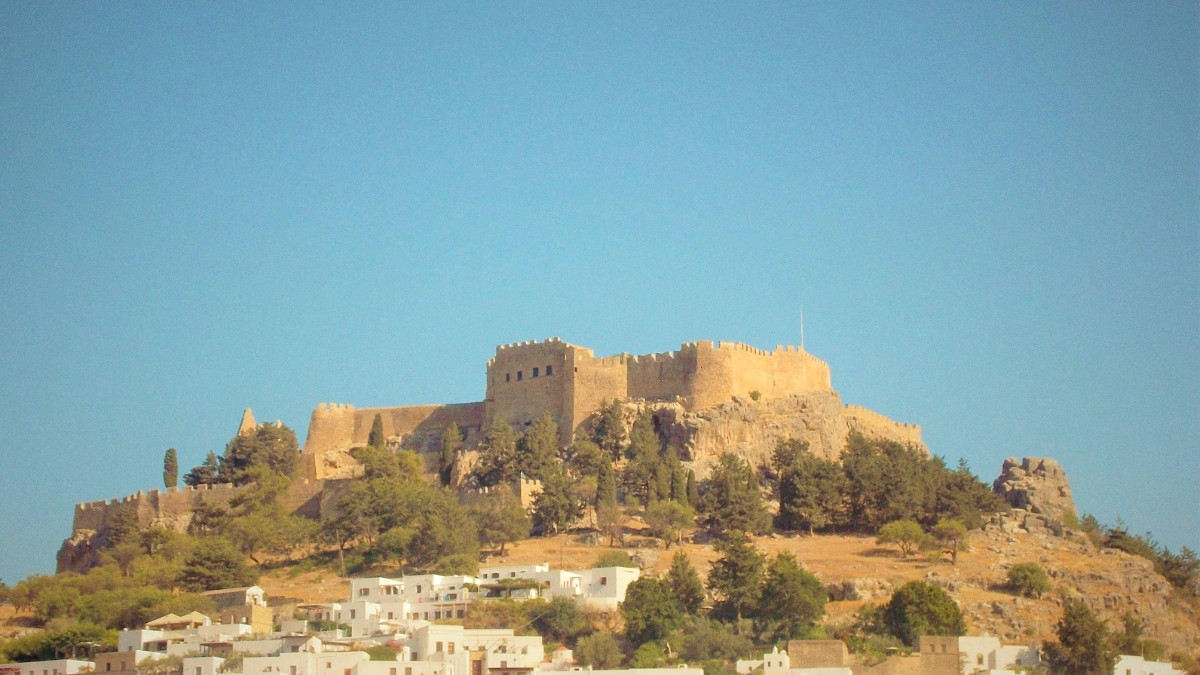
Dodecanese, Greece
Step into a destination that is a special place in the heart of the Aegean, where every corner presents a new experience.
Rhodes' location at the crossroads of Europe, the Middle East, and Africa historically fostered extensive trade networks.
This position shaped the island's culture and development throughout its long existence.
Rhodes is a past stretching back thousands of years, a narrative embedded in its landscape and structures. Its story begins in antiquity, marked by its connection to one of the Seven Wonders of the Ancient World: the Colossus of Rhodes. This immense bronze statue depicted the sun god Helios. It once stood proudly at the entrance to Mandraki Harbor, symbolizing the island's wealth and power. Though an earthquake in 226 BC brought the Colossus down, its memory lives on, a powerful part of the island's identity.
The Hellenistic period saw Rhodes flourish as a major maritime and commercial hub. Its strategic location supported extensive trade networks, contributing to its prosperity and cultural advancements. This era left behind significant archaeological remnants, including the ancient cities of Lindos, Kamiros, and Ialysos, each offering insights into the island's early sophisticated urban planning and societal structures.
Home to the Colossus of Rhodes, one of the Seven Wonders of the Ancient World.
Major maritime and commercial center.
Transformed Rhodes City into a formidable fortress; UNESCO World Heritage Site.
Introduced new cultural elements (mosques, minarets, Turkish baths).
Infrastructure development and archaeological restoration, distinct architectural styles.
A dramatic shift in Rhodes' history arrived in the medieval era. From 1309 to 1522, the Knights Hospitaller of St. John made Rhodes their stronghold. These warrior monks transformed Rhodes City into a formidable fortress, shaping its architecture and strategic importance. The impressive fortifications of Rhodes City, meticulously built by the Knights, protected them from various invasions. The Medieval City of Rhodes, an UNESCO World Heritage Site, is a testament to their presence. It is one of the best-preserved medieval fortified cities globally.
The Medieval City of Rhodes, an UNESCO World Heritage Site, is a remarkably preserved medieval fortified city. Its walls, palaces, and streets invite exploration, a living museum.
Rhodes' diverse heritage displays a blend of Hellenistic, Knights Hospitaller, Ottoman, and Italian influences, each leaving its unique mark.
Every ruin, every building, and every street is a piece of the past, inviting visitors to uncover the layers of its fascinating story.
The latest census data from 2021 shows the population of the Rhodes Municipality stands at 124,851 inhabitants across the entire island. Rhodes City functions as the administrative and economic hub. Approximately 50,000 people reside in Rhodes City itself. This urban center serves as the focal point for island activity.
The island's economy mainly relies on tourism, its leading industry. Rhodes attracts millions of visitors each year, drawn by its historical sites, sunny beaches, and lively atmosphere. The services sector, encompassing hospitality, retail, and related businesses, directly benefits from this tourism influx. Beyond tourism, Rhodes supports light industry, including small-scale manufacturing and processing. Traditional products like olives, olive oil, wine, and citrus fruits are cultivated across the island. These agricultural traditions maintain a connection to the island's fertile lands and contribute to its distinct local cuisine.
Rhodes Municipality: 124,851 inhabitants (2021 census).
Tourism is the leading industry, with supplementary light industry and traditional agriculture.
The Medieval City of Rhodes is an UNESCO World Heritage Site, a global cultural treasure.
The Medieval City of Rhodes holds the esteemed status of an UNESCO World Heritage Site. This recognition confirms its global cultural and historical importance.
The site is a living museum, offering an unique opportunity to experience a remarkably preserved medieval fortified city. Its walls, palaces, and streets invite exploration.